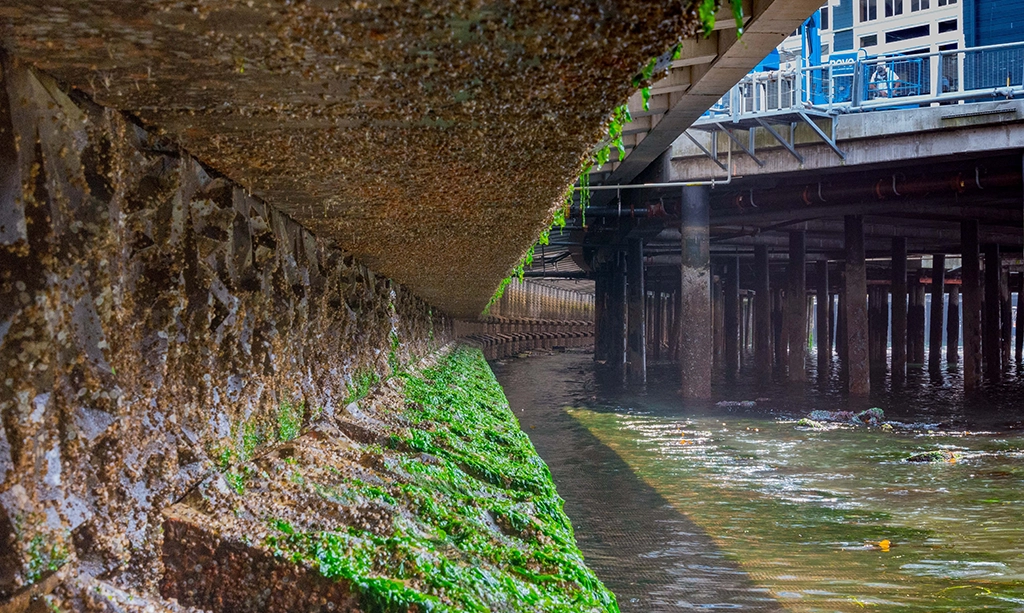Living seawalls can offer some of the benefits of living shorelines
Armoring shorelines with hardened substances protects the shore, but it generally does not offer the benefits of nature-based alternatives in terms of habitat provision and other ecosystem services. Researchers are envisioning ways to expand shoreline design options to include hardened coastal protection that’s developed specifically to enhance local biodiversity and provide societal benefits like recreation. These designs can be used to retrofit failing seawalls or applied to places where traditional living shorelines are not viable, such as urban areas.
Shoreline armoring projects can increase structural complexity by incorporating design elements such as seawall texturing (including the addition of grooves and crevices), habitat benches that provide shallow habitat for marine organisms, or submerged structures like artificial reefs. These added structural components help to increase biodiversity and can attract nekton such as fish and large crustaceans. Living seawalls also allow people to simply connect with the sea and can provide a serene location to observe wildlife and nature.
Current examples of urban projects that use hardened structures to enhance ecosystem services come from just a few manufacturers and practitioners. These include the Seattle Seawall for salmon habitat restoration; the Living Seawalls Project, which has goals of increasing biodiversity on multiple continents; the Reef Design Lab, which is developing marine habitat infrastructure; and ECOncrete Projects, which is working to increase biodiversity and sequester carbon. But critical information is still needed to properly design urban shorelines and to best customize basic techniques for local conditions.
Source: Grothues, T.M. et al. 2025. Life as a Design Element of Hardened Urban Shorelines. Estuaries and Coasts. DOI: 10.1007/s12237-024-01475-z
Image: Habitat shelf on the Elliott Bay Seawall / City of Seattle
Original article at CESN 2025 Issue 2

